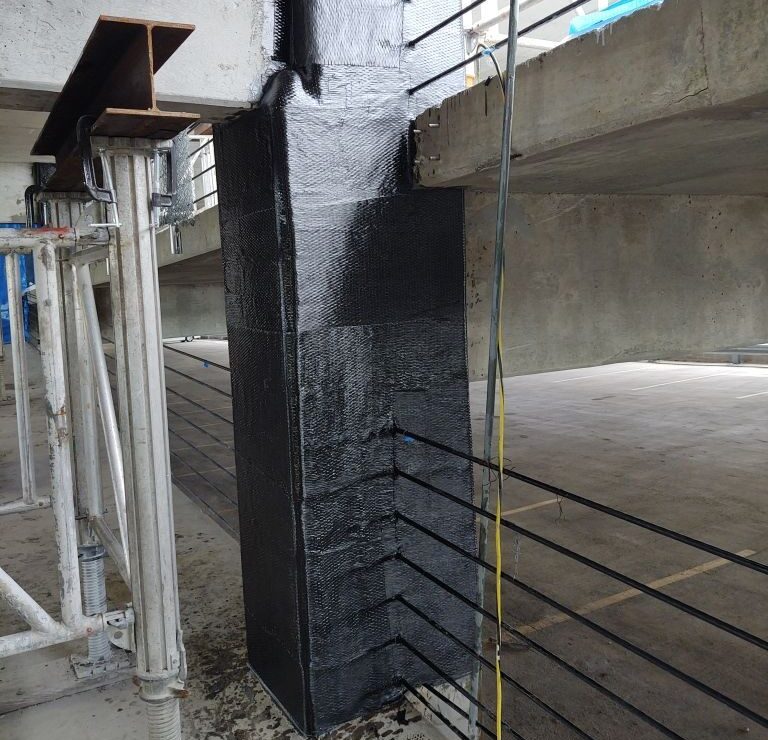Scientist Roger Bacon discovered carbon fiber by chance in 1958, and it has since become an essential element in lightweight composites. Many industries, including the construction sector, rely on carbon fiber composites for concrete repair and reinforcement.
Here at Structural Restoration Services, Inc., we specialize in carbon fiber structural reinforcement and repairs, helping you keep your buildings in tip-top shape.

There are three primary composite strengthening systems — Fiber Reinforced Polymer (FRP), Carbon Fiber Reinforced Polymer (CFRP), and Glass Fiber Reinforced Polymer (GFRP) are advanced composite materials used in structural repairs. Here’s a breakdown of each type and the common structural repairs associated with them:
FRP is a composite material made of a polymer matrix reinforced with fibers (which can be glass, carbon, or aramid). It is known for its high strength-to-weight ratio and corrosion resistance.
CFRP is a specific type of FRP that uses carbon fibers for reinforcement. It offers exceptional strength, rigidity, and low weight, making it ideal for high-performance applications.
GFRP uses glass fibers as the reinforcing agent and is typically less expensive than CFRP. It has good corrosion resistance and is often used in less demanding applications.
Moisture Protection: Utilizing GFRP to encapsulate and protect vulnerable structural elements from moisture damage.
From reinforcing bridges to commercial buildings and parking structures, carbon fiber composites are a versatile choice for numerous commercial applications. For example, carbon fiber strengthening wraps can reinforce building beams to ensure greater stability during inclement weather.
Large cracks in concrete also pose a safety concern for building occupants, yet carbon fiber concrete repairs help to remove the risk. You can also use this material in applications near water, such as the reinforcement of a pier, since the composites resist corrosion.
As building components often face extensive exposure to the sun and rain, you need to invest in materials that will remain strong in these conditions. Carbon fiber composites feature a durable matrix that can withstand the elements. Choosing these composites for your reinforcement application means you can rest easy knowing the results will last.
If you’re looking into carbon fiber concrete reinforcement, here are three benefits to consider:
The closely packed fibers provide enhanced strength and stiffness. Using these composites for structural reinforcement increases the load capacity.
Carbon fiber composites are roughly 80% lighter than steel. The reduced mass means there is less need for additional beams and support.
Since carbon fiber composites have a resin, polymer or thermoplastic matrix, they can stand up to the elements. This reduces the amount of ongoing maintenance while ensuring the longevity of your building.
Structural Restoration Services, Inc. specializes in carbon fiber structural reinforcement, allowing you to repair and strengthen commercial structures. Whether you need a solution for a compromised parking garage or retrofitting an industrial structure, we will assist you customizing a carbon fiber solution. We take great pride in delivering excellent project results — our proven track record is testimony to that.
Schedule a call today to enhance occupant safety, meet building code requirements and ensure the longevity of your building with our services.

Structural Restoration Services, Inc. offers the expert, honest restoration services you need. Contact us today to schedule a time to discuss your project.